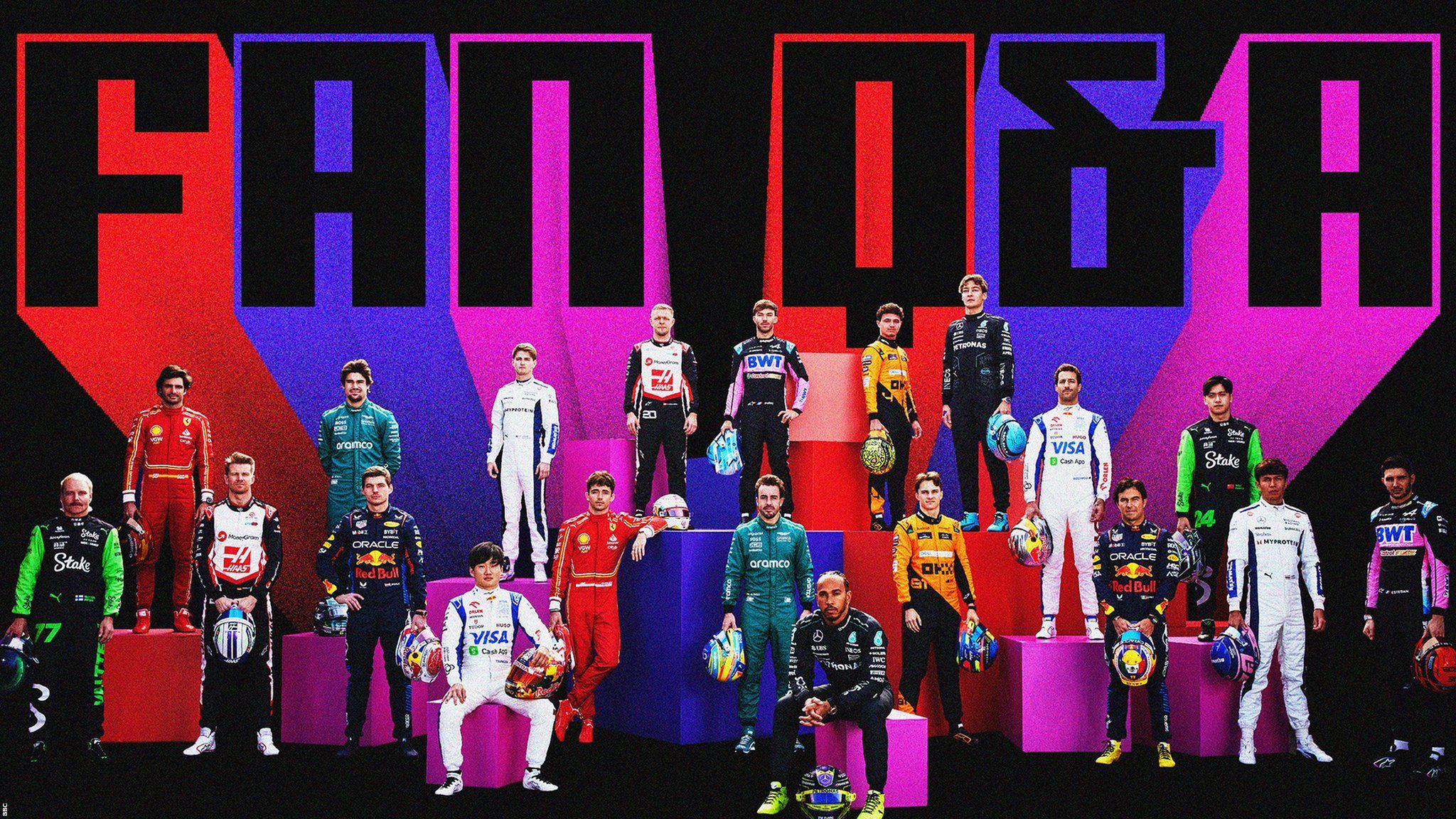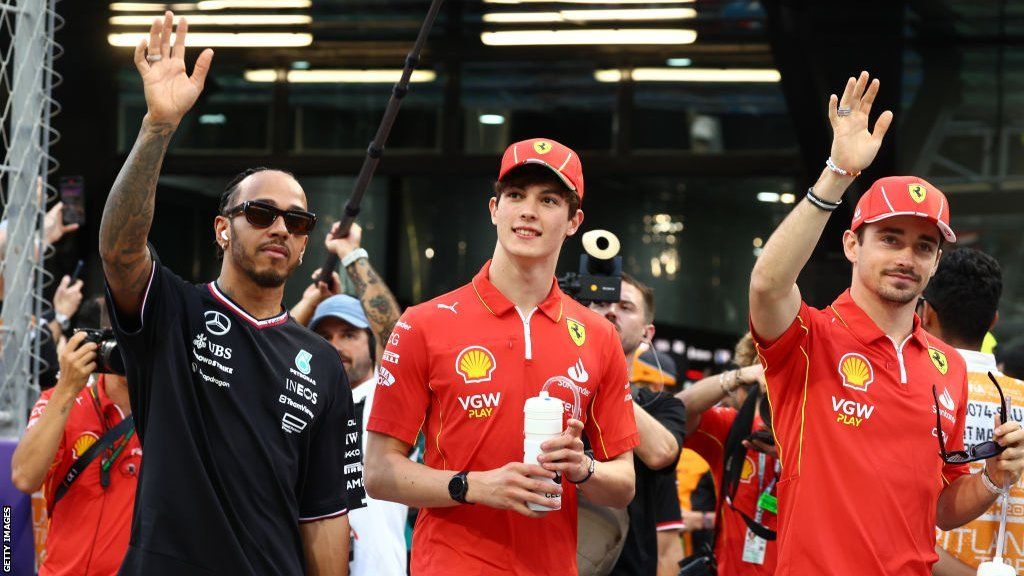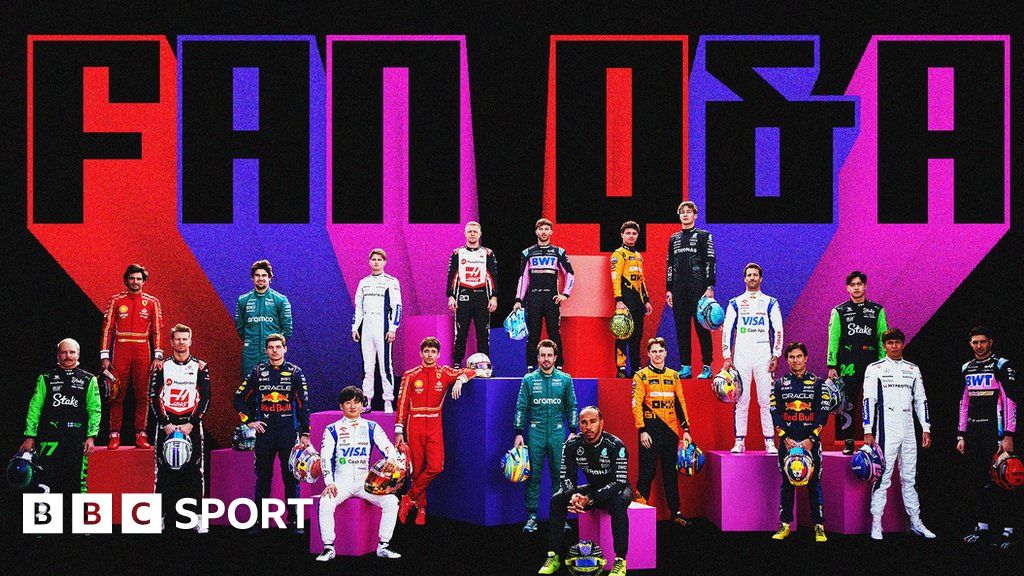
The 2024 Formula 1 season continued at the weekend, which saw Red Bull’s Max Verstappen take a comfortable victory at the Saudi Arabian Grand Prix.
The race was also significant for 18-year-old Briton Oliver Bearman, who stood in for Carlos Sainz and became the youngest British driver in F1 history, finishing seventh.
As the race calendar pauses for a week, BBC Sport’s chief F1 writer Andrew Benson answers your questions.
In five races’ time, Max Verstappen could have scored half of all of Red Bull’s wins. Other than short terms like Brawn, has this been done?
Andrew: The question is based on the basic statistics that Red Bull have 115 grand prix victories following Verstappen’s win in Jeddah on Saturday and Verstappen himself has 56. So, yes, if Verstappen wins the next five races in Australia, Japan, China, Miami and Imola, Red Bull will have 120 and he 61, and he will have scored slightly over half of all Red Bull’s wins.
It’s a remarkable stat that speaks loudly of his and their domination since mid-2022 but it’s not unprecedented. Lewis Hamilton, after all, has 103 wins, 82 of which are with Mercedes, who have taken only 125 victories across their time in F1 from 1954-55 and since 2010.
Why doesn’t F1 use long-lap penalties like motorcycle racing? This would prevent drivers out of place from slowing down others, as Kevin Magnussen did in Saudi Arabia.
Interesting question, and not one I had considered before. In MotoGP, so-called long-lap penalties were introduced a few years ago, primarily to punish track-limits transgressions, I believe. A rider is forced to ride through a designated extra piece of track, which is some seconds slower than the normal line.
I have never heard of F1 considering such ideas.
The Magnussen situation is an interesting one, and one on which there are different views. He held up a train of cars in Jeddah to benefit his Haas team-mate Nico Hulkenberg who was, as a result, able to make his pit stop and come out ahead of them and score a point.
That is understandable in the circumstances. Where it becomes less justifiable is that the Dane was ahead of RB’s Yuki Tsunoda only after overtaking him off the track, for which he earned one of his two 10-second penalties.
It does seem questionable that, having made an illegal overtake, he was then able to use the position he gained to compromise the races of others. This, it seems, will be brought up with the FIA by rivals before the next race in Australia.
What factors do you think contributed to Porsche’s lack of success in entering Formula 1 in 2026?
Porsche was intending to enter F1 in 2026 along with sister brand Audi, both members of the Volkswagen Group.
Each brand had a different plan. Audi’s was to run its own team – and it has bought Sauber and is going ahead with its entry, more on which below.
Porsche’s plan was to partner with an existing team as an engine partner, and they chose Red Bull.
Talks became pretty advanced, and the late Red Bull co-owner Dietrich Mateschitz was very much in favour. But team principal Christian Horner became uncomfortable about the amount of control he would cede as part of the plan, which would have resulted in Porsche becoming a 50% shareholder, and talks broke down.
Red Bull have now joined forces with US car giant Ford, which will partner with the team’s new powertrains facility on their 2026 engine.
Does Ollie Bearman’s drive, flawless as it was, prove that the performance of F1 cars is now limited by the tyres rather than the driver?
A lot to unpick in this question, and I will try to be brief. Oliver Bearman’s drive to seventh place on his debut for Ferrari was proof of nothing but his great talent. It was an outstanding performance, which was rightly lauded as indication of him being a potential future star.
By definition, F1 cars are always limited by tyres – they are the things that touch the track and their grip and durability are crucial in defining cornering speed.
But what I assume the question is driving at are the characteristics of the Pirelli tyres used in F1 since 2011. The drivers have been frustrated for a long time that the Pirellis are too thermally sensitive and require managing throughout races – and sometimes even throughout a qualifying lap. If they overheat – and they do so easily – they lose grip and it never comes back.
Pirelli is constantly being asked to change this characteristic, which is unlike most other racing tyres from other companies, but has proved either unwilling or unable to do so.
Typically, there is a small handful of races in a year in which this characteristic is greatly reduced. Because of the low levels of tyre degradation in Jeddah, it was one of them, and drivers could push much harder than usual.

After his great race to finish seventh, does Oliver Bearman deserve a seat for next year and if so, which team?
Without doubt – and his team-mate Charles Leclerc, among others, said as much.
Where is it likely to be? Bearman is a member of the Ferrari driver academy, and they won’t be wanting to let him go. So the obvious candidate is Haas, which is a close partner of Ferrari.
But quite a few teams are likely to be interested in him after his performance in Saudi Arabia, so Ferrari could just as easily do a deal with Williams, Sauber, or perhaps even Alpine.
With a cost cap, do you see any possibility that the FIA/F1 would allow teams to design a car without restrictions other than price?
It’s an interesting idea – and one engineers float from time to time. It’s also true that the design leaders in F1 at the moment are frustrated with the FIA’s approach to the rules – as you can read in this story we published a few days ago.
But the question is the opposite of what the FIA currently believes is the best way to make the racing competitive, which is to restrict the engineers’ freedom, not increase it.
The fear would be that if the rules were opened up, someone would find an innovation that would lead them to dominate. That, of course, is not very different to where F1 is now. Be that as it may, I don’t see any chance of the approach suggested in the question being adopted.
No-one seems to be talking engines. Have the rules stifled innovation and engine development?
An engine development freeze was imposed in F1 in 2021 as a cost-cutting mechanism. Since then, manufacturers have been allowed to make changes only on the grounds of reliability.
Of course, F1 being what it is, this means manufacturers can find ways to increase performance. Not least because if an engine is more reliable, it can be pushed harder.
When it was introduced, it was felt that the engines were all pretty equal in performance. But last year, there was some discussion about engine equalisation because Renault/Alpine felt it had become left behind because its engineers hadn’t been as successful as those of Ferrari, Honda and Mercedes in exploiting these areas. But the talks broke down.
There is a new engine regulation coming in for 2026, with the proportion of power produced by the hybrid system increased from around 25% to close to 50%, and the removal of the MGU-H, the part of the hybrid system which recovers energy from the turbo. This is being done under a new engine budget cap to keep costs under control.
What three changes would you make to the sport to stop such long periods of dominance by a single driver?
I’m a journalist, not an engineer, and I don’t feel it is my position to answer questions such as this. Having said that, it is hard to argue that the new rules introduced in 2022 have been anything other than a failure.
They have succeeded in their aim of bringing the field closer together, but they have facilitated the most dominant season in history, and likely another one this year – and all because one man, Adrian Newey, understood what was going to be required of the new rules earlier than everyone else. As a result, Red Bull got a head start that, at the moment, no-one looks capable of closing.
Generally, the best way to make competitive racing is to leave the rules alone. And in 2021, F1 had one of its greatest-ever seasons with Mercedes and Red Bull going at it hammer and tongs with Lewis Hamilton and Max Verstappen.
In hindsight, it seems a shame that those rules were not simply left in place, to allow teams such as McLaren and Ferrari to close in at the front. In this context, is also concerning that a whole new rule set – of immense complexity – is being worked on for 2026.
Would changing the current rule on DRS activation help with closer racing and overtaking? For example, change the time gap from one to two seconds.
F1 has a conflicted relationship with DRS, the drag-reduction system that allows a car close behind another one to have a straight-line speed boost to facilitate overtaking.
Everyone agrees that, in an ideal world, it would not exist, that drivers could follow closely and overtake without an artificial aid.
No one wants a situation whereby overtaking becomes inevitable if a car gets close behind another one. DRS was meant to make overtaking possible, not a certainty. The sport is constantly trying to tread that fine line. Sometimes it goes too far one way and sometimes too far the other.
How good will Audi be in 2026, and what does it mean for the driver market?
Last week, Audi announced it was accelerating its F1 plans and planning a complete takeover of Sauber.
You can take this as an indication that Audi recognises it needs to get serious about its F1 entry, and that it understands how much work it has to do to turn Sauber into a competitive entity.
Its initial aim was to be competing for races and championships within three years of entry. I’m hearing that, internally, the company now accepts five years is a more realistic timetable.
But investment is already increasing, staff levels have gone up considerably in the last year, and you can be certain of one thing – Audi is deadly serious about winning in F1.

-
The health benefits of going to bed one hour earlier: Dr Michael Mosley investigates the positive effects of a bit more sleep
-
Welcome to the weird world of an NHS labour ward: Ben Whishaw stars in Adam Kay’s raw, ridiculous rollercoaster diary of a junior doctor’s life

